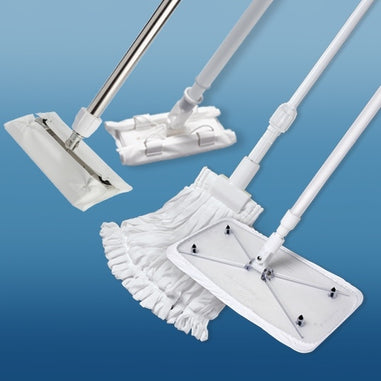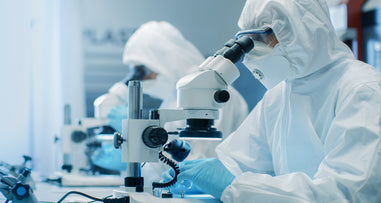- No products in the cart.
Cleanrooms are vital in various industries such as pharmaceuticals, biotechnology, electronics, and aerospace, where precision and quality control are paramount. They ensure the production of uncontaminated products by maintaining a highly controlled environment. To guarantee the integrity of cleanrooms, regular inspections are essential. In this comprehensive guide, we'll delve into the intricacies of mastering cleanroom inspections to ensure the highest levels of quality assurance.
The Importance of Cleanroom Inspections
Cleanroom inspections are like health check-ups for critical manufacturing environments. They help identify potential contamination sources, equipment malfunctions, and procedural errors, all of which can compromise product quality and safety. Here are some key reasons why cleanroom inspections are crucial:
-
Product Quality: Any contamination in cleanrooms can lead to defective products, which not only result in financial losses but can also pose serious health risks.
-
Regulatory Compliance: Industries like pharmaceuticals and healthcare are highly regulated, and non-compliance with cleanroom standards can result in hefty fines or even legal action.
-
Customer Trust: Consistently maintaining cleanroom standards demonstrates your commitment to quality, which can enhance your brand's reputation and customer trust.
-
Cost Savings: Timely detection of issues during inspections can prevent costly recalls, shutdowns, and equipment damage.
The Different Types of Cleanroom Inspections
There are two main types of cleanroom inspections: visual inspections and physical inspections.
Visual inspections are conducted by visually inspecting the cleanroom environment for signs of contamination. This includes looking for dust, dirt, and other particles on surfaces, as well as for any signs of moisture.
Physical inspections are conducted by using instruments to measure the levels of contaminants in the air and on surfaces. These instruments can include particle counters, microbial samplers, and humidity meters.
Preparation for Cleanroom Inspections
Before diving into the inspection process, it's essential to prepare thoroughly. Here are some key steps:
-
Documentation: Ensure all cleanroom-related documentation, including standard operating procedures, maintenance records, and validation reports, are up-to-date and readily accessible.
-
Team Training: Train your inspection team on cleanroom protocols and procedures, emphasizing the importance of attention to detail.
-
Equipment Calibration: Regularly calibrate and maintain all cleanroom equipment to guarantee accuracy and reliability.
-
Cleanroom Entry Protocols: Reinforce cleanroom entry and exit protocols for personnel, including gowning procedures and hygiene practices.
The Cleanroom Inspection Process
A systematic approach to cleanroom inspections is vital. Here's a step-by-step guide to conducting an effective cleanroom inspection:
1. Pre-Inspection Preparation
- Schedule inspections during non-production hours to avoid disruptions.
- Assemble your inspection team, including experts in cleanroom procedures and regulations.
- Gather inspection tools such as checklists, testing equipment, and documentation.
2. Visual Inspection
Begin with a visual assessment of the cleanroom's overall condition:
- Check for any visible contamination, such as particles or microbial growth.
- Inspect the cleanliness of walls, ceilings, floors, and workstations.
- Examine the condition of cleanroom garments, including gloves, masks, and coveralls.
- Ensure proper placement and functionality of safety equipment and emergency exits.
3. Cleanroom Equipment Inspection
Cleanroom equipment plays a critical role in maintaining the controlled environment. Examine all equipment, including:
- HEPA/ULPA filters: Check for leaks, damage, or signs of wear.
- HVAC systems: Ensure proper airflow and temperature control.
- Monitoring devices: Verify that monitoring equipment is functioning correctly.
- Lighting: Ensure proper illumination levels and that fixtures are clean and in good condition.
4. Contamination Control
Evaluate the effectiveness of contamination control measures:
- Review cleaning procedures and schedules.
- Inspect storage areas for chemicals and supplies, ensuring proper labeling and containment.
- Verify that waste disposal protocols are followed, and waste containers are properly sealed and labeled.
5. Documentation Review
Thoroughly examine all documentation related to cleanroom operations:
- Confirm that standard operating procedures are being followed.
- Check calibration and maintenance records for equipment.
- Review personnel training and gowning records.
- Examine cleanroom logbooks for entries related to incidents or deviations.
6. Air Quality Testing
Testing the air quality within the cleanroom is crucial. This involves:
- Conducting particle counts to ensure compliance with ISO cleanliness standards.
- Measuring temperature, humidity, and differential pressure.
- Verifying that airflows are consistent and within specified ranges.
7. Microbiological Testing
In environments requiring extremely low levels of contamination, such as pharmaceutical cleanrooms, microbiological testing is essential. This involves:
- Sampling surfaces and the air for microbial contamination.
- Culturing and analyzing samples to detect the presence of harmful microorganisms.
8. Corrective Actions and Follow-Up
During the inspection, if any issues or deviations from cleanroom standards are identified, corrective actions should be initiated immediately. Document these actions, assign responsibility for resolution, and establish follow-up procedures to ensure that the problems are rectified.
Proper Garbing and Cleanroom PPE: Preparing for Inspection
Before conducting cleanroom inspections, proper garbing and wearing the right Personal Protective Equipment (PPE) are essential steps. This ensures the integrity of the controlled environment and the success of the inspection. Here's a concise guide:
1. Cleanroom Garments
- Wear cleanroom suits or coveralls made of appropriate fabric.
- Use hoods or hairnets to cover hair.
- Put on facial masks or beard covers to prevent respiratory particles.
- Gloves and shoe covers protect both the operator and the product.
2. Donning and Doffing Procedures
- Follow specific procedures for putting on and taking off cleanroom garments to minimize contamination risks.
3. Cleanroom PPE
- Consider safety glasses, goggles, or face shields to protect the eyes.
- Respirators are essential for airborne contaminants.
- Cleanroom boots or shoe covers prevent contamination from footwear.
4. Cleanroom Gowning Rooms
- Use dedicated gowning rooms or anterooms to reduce external contamination.
- Some gowning rooms have air showers to remove loose particles.
- Enforce strict gowning room protocols and access control.
5. Periodic PPE Checks
- Inspect PPE for integrity and defects regularly, especially gloves, masks, and hoods.
Post-Inspection Procedures
After completing the inspection, there are several critical post-inspection tasks:
- Compile the inspection report, including all findings and corrective actions.
- Share the report with relevant stakeholders, including management and quality assurance teams.
- Implement necessary corrective actions promptly.
- Schedule regular follow-up inspections to ensure ongoing compliance and improvement.
Conclusion
Mastering cleanroom inspections is essential for industries where maintaining a controlled environment is critical to product quality and safety. By following a systematic approach, ensuring proper preparation, and conducting thorough inspections, you can not only meet regulatory requirements but also enhance product quality, customer trust, and overall operational efficiency. Cleanroom inspections are not just a routine task; they are a fundamental pillar of quality assurance in critical manufacturing environments.
For over 40 years, Lab Pro Inc. is your steadfast source for premium cleanroom lab supplies, hand tools, lab equipment, chemicals, and PPE apparel. Trusted by aerospace industries, medical device companies, and laboratories globally, we epitomize exceptional quality in every product. Experience the convenience of next day service in California. Contact us online or at 888-452-2776 to explore solutions tailor-made for the laboratory industry. Elevate your experiments with Lab Pro Inc. – your partner in precision and excellence.



















































